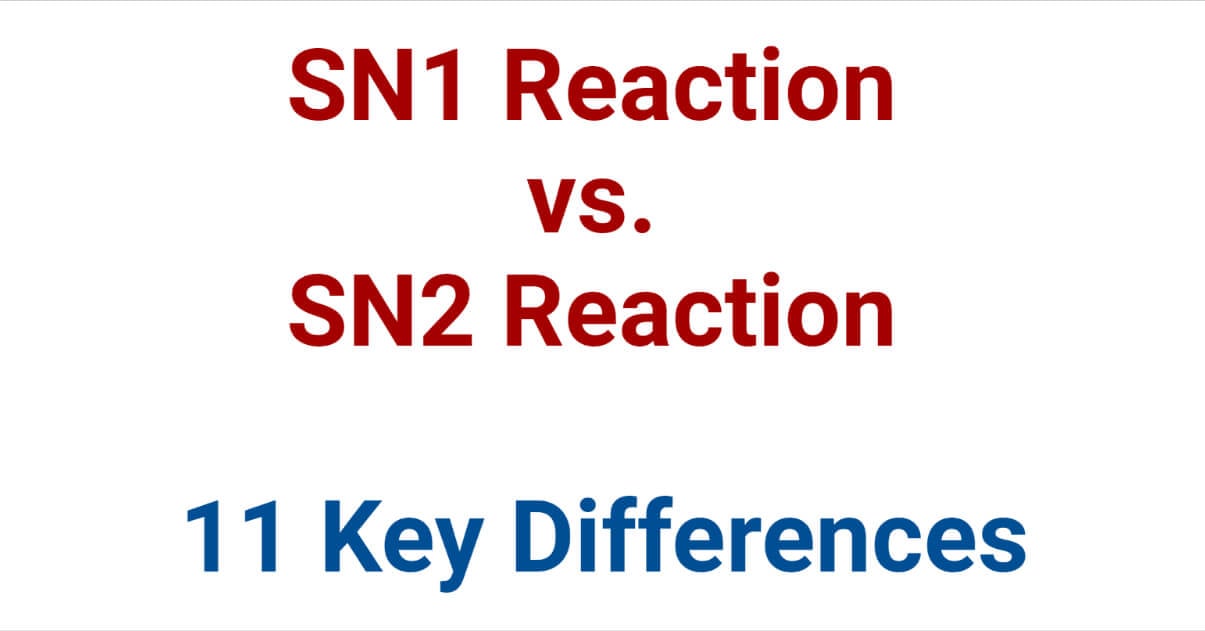SN1 reaction of a two-step reaction mechanism. In which the formation of carbocation takes place before the nucleophile approaches the substrate. Generally, secondary and tertiary haloalkanes show SN1 reactions.
The SN2 reaction is a concerted reaction in which the attack of a nucleophile on the substrate and the departure of the leaving group occur simultaneously. Primary haloalkanes usually display such reactions.

SN1 and SN2 reactions have different reaction mechanisms. They go through the cation formation step or transition state to produce a product with a different configuration. The key differences between SN1 and SN2 reactions are as follow:
| S.N. | SN1 Reaction | SN2 Reaction |
| 1. | It follows first-order kinetics. | It follows second-order kinetics. |
| 2. | It is a two-step reaction process. | It is a one-step reaction process. |
| 3. | The rate of reaction depends on the concentration of substrate only. | The rate of reaction depends on the concentration of both substrate and nucleophile. |
| 4. | The nucleophile can attack from either side, but the product from the backside attack predominates. | The nucleophile attacks from the back exclusively. |
| 5. | The rearrangement of carbocation occurs. | Rearrangement products are not possible. |
| 6. | The reactivity order of alkylhalides is CH3X < 10 < 20 < 30 . | The reactivity order of alkylhalides is CH3X > 10 > 20 > 30 . |
| 7. | An elimination product is formed due to a side reaction. | No side reaction occurs. |
| 8. | Mainly electronic factors influence the rate of reaction. | Steric factors influence the rate of reaction. |
| 9. | Partial racemized product is formed. | Complete stereochemical inversion takes place. |
| 10. | Mild nucleophiles ( e.g., alcohol, water) generally favor SN1 reaction. | Strong nucleophiles ( e.g., alkoxide) generally favor SN2 reactions. |
| 11. | Solvents of high polarity favor the SN1 reaction. | Solvents of low polarity favor SN2 reaction. |
Interesting Science Videos
References
- March, J. (1992). Advanced organic chemistry: Reactions, mechanisms, and structure. New York: John Wiley & Sons.
- Peter sykes, A Guide Book to Mechanisms in organic chemistry, (6th edition) Pearson.
- https://chemicalnote.com/sn1-and-sn2-reaction-kinetics-mechanism-stereochemistry-and-reactivity/
- https://www.vedantu.com/chemistry/difference-between-sn1-and-sn2
- https://byjus.com/chemistry/difference-between-sn1-and-sn2/
- https://unacademy.com/content/jee/difference-between/sn1-and-sn2/
